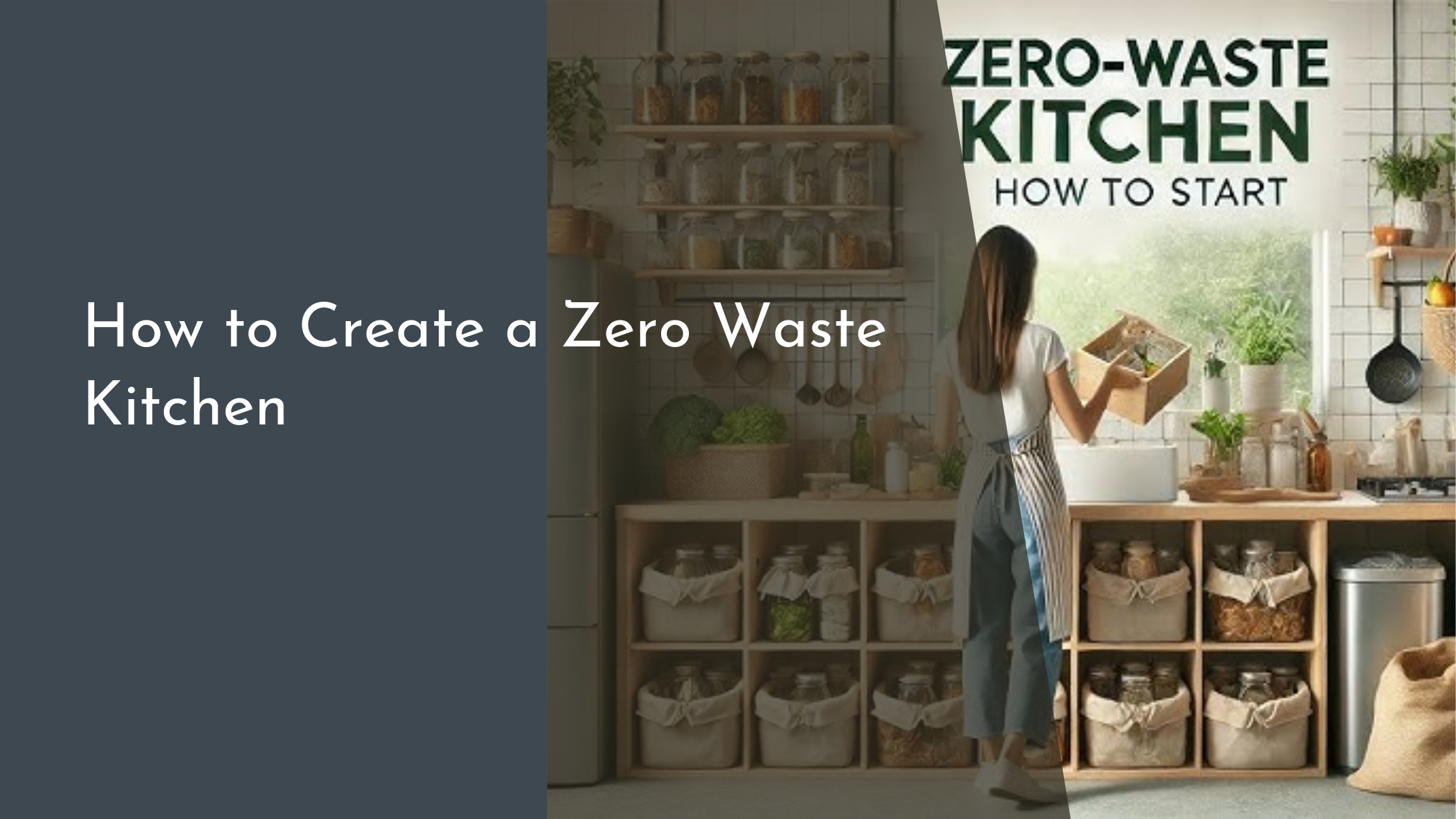How to Create a Zero Waste Kitchen
Creating a zero waste kitchen is a rewarding journey towards sustainability and environmental responsibility. It’s a way to minimize your ecological footprint while enhancing your culinary creativity. By rethinking the way we purchase, use, and dispose of kitchen products, we can significantly reduce waste and create a greener home environment. Here’s how you can embark on this eco-friendly adventure by assessing your kitchen practices, choosing sustainable products, composting, and finding creative ways to repurpose and reuse.
Assessing and Reducing Kitchen Waste
The first step in creating a zero waste kitchen is to assess your current waste output. Begin by conducting a waste audit to understand what you typically throw away. Keep track of items that frequently end up in the trash or recycling bin, such as food scraps, packaging, and single-use products. This assessment will help you identify key areas for improvement. Once you know where the bulk of your waste comes from, you can develop a plan to reduce it by making small, impactful changes in your daily kitchen routines.
After identifying the main sources of waste, implement strategies to reduce them. Start by planning meals more effectively to minimize food waste. Organize your pantry and refrigerator to ensure that older products are used before they expire. Opt for bulk buying to reduce packaging waste, and bring reusable bags and containers when shopping. These small adjustments not only reduce waste but also save money and enhance the quality of your meals. Remember, the goal is progress, not perfection—every little step towards reducing waste makes a difference.
Choosing Sustainable Kitchen Products
Switching to sustainable kitchen products is another crucial element in the journey towards a zero waste kitchen. Choose items made from eco-friendly materials such as bamboo, stainless steel, or glass over plastic. For instance, replace disposable paper towels with reusable cloths and swap out plastic wrap for beeswax wraps. These alternatives not only reduce waste but also offer a charming aesthetic to your kitchen.
Additionally, prioritize products that are durable and long-lasting. Look for high-quality kitchen tools and appliances that can withstand wear and tear, reducing the need for frequent replacements. Invest in a good set of reusable containers for storage, which can also double as lunch boxes or freezer storage. By making conscious choices in the products you purchase, you contribute significantly to waste reduction and create a kitchen that reflects your commitment to sustainability.
Composting: Transforming Scraps into Soil
Composting is an effective way to reduce kitchen waste while enriching soil health. It involves the natural decomposition of organic waste, turning it into a nutrient-rich soil amendment. Begin composting by setting up a compost bin or pile in your backyard, or consider a small indoor composting system if you’re tight on space. Collect kitchen scraps like fruit and vegetable peels, coffee grounds, and eggshells, and add them to your compost. Avoid adding meat, dairy, or oily foods, as these can attract pests and slow down the composting process.
The benefits of composting extend beyond waste reduction. As your compost pile breaks down, it transforms into “black gold”—a rich soil that can be used to nourish plants, whether in a home garden or potted plants. Composting closes the loop of sustainability by returning valuable nutrients to the earth, reducing the need for chemical fertilizers, and supporting plant growth. It’s a fulfilling way to actively engage with nature’s recycling process and witness the magic of transformation right in your backyard.
Creative Ways to Repurpose and Reuse
A zero waste kitchen thrives on creativity and innovation in repurposing and reusing materials. Instead of discarding items like glass jars or tin cans, give them a new life as storage containers, vases, or planters. Old utensils can be transformed into unique garden markers, while worn-out kitchen towels can serve as cleaning rags or even be upcycled into reusable napkins. The possibilities are endless when you start viewing potential waste as a resource for creativity.
Engage the whole family in finding inventive ways to reuse kitchen scraps and leftovers. For example, stale bread can transform into croutons or bread pudding, and overripe fruit can be blended into smoothies or baked into muffins. Get creative with cooking and discover new recipes that utilize leftovers in delicious ways. By embracing a mindset of resourcefulness and innovation, you not only reduce waste but also enjoy the thrill of giving old items a fresh purpose.
Transitioning to a zero waste kitchen is an empowering endeavor that contributes to a healthier planet and a more sustainable lifestyle. By thoughtfully assessing and reducing waste, choosing sustainable products, composting, and repurposing materials, you create a kitchen that is both eco-friendly and aesthetically pleasing. Embrace the journey with enthusiasm and creativity, knowing that each step you take is a positive contribution towards a more sustainable world. Together, we can make a difference, one kitchen at a time.

